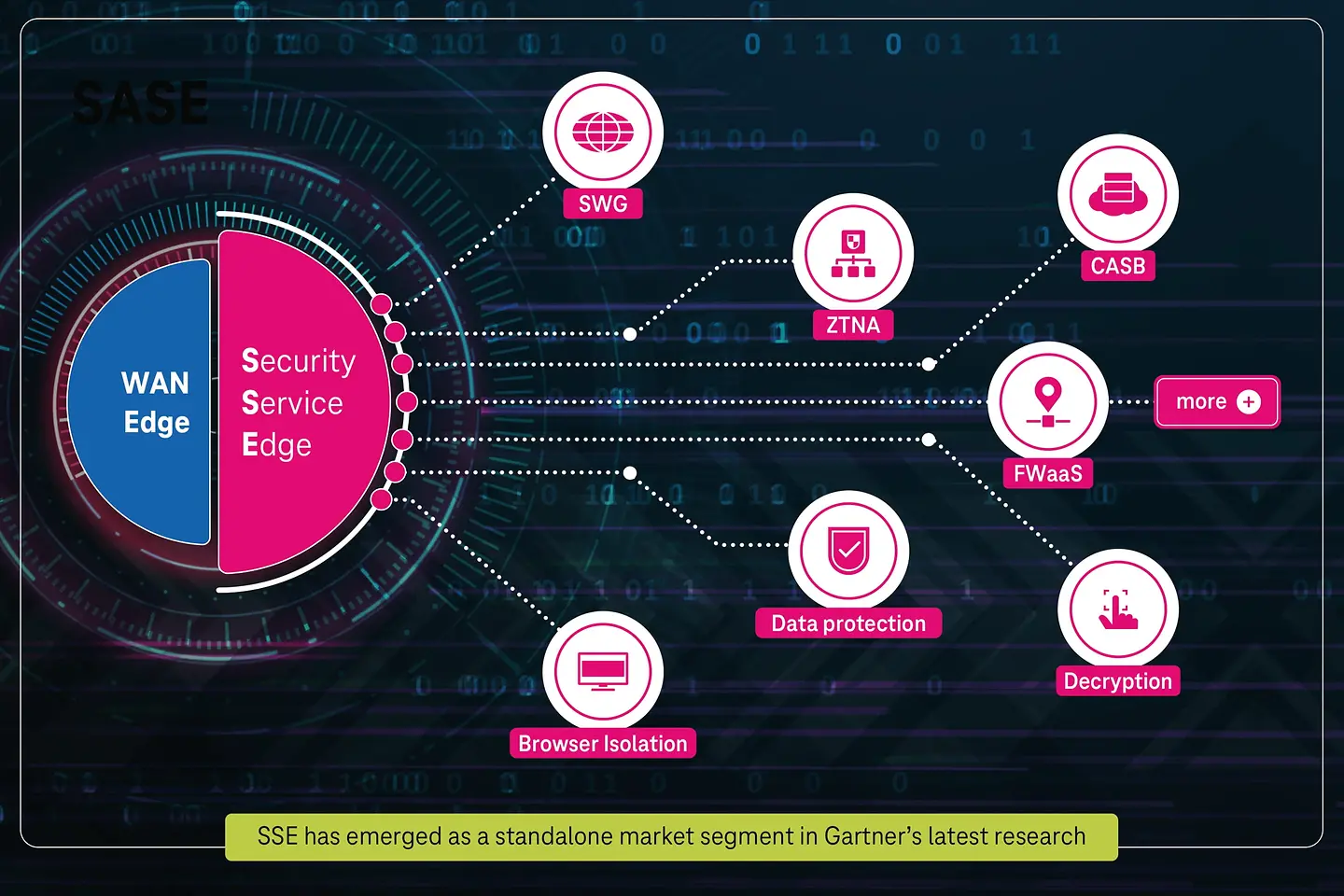
Enterprises want to reduce the attack surface and save security costs, but these ambitions can feel mutually exclusive. But there is a way, and with a security solution: SSE promises to deliver security services under one roof. Learn what SSE is and how it reduces risk and improves performance.
Top takeaways include:

Security Service Edge (SSE) is part of the Secure Access Service Edge (SASE) framework that concentrates on security components. The market for SSE is growing; it entered Gartner's Hype Cycle 2021 as one of the four must-have technologies for cloud security.
SASE is an architectural framework that converges network and security capabilities and delivers them as a unified service. Remove the networking capabilities from this architecture, and what remains is Security Service Edge. In simple terms, SSE is SASE, but excludes the SD-WAN component.
SSE focuses on whether there are sufficient levels of protection across these security-related components:
The Security Service Edge architecture converges these components. Network-related components like WAN optimization and bandwidth aggregation are not part of SSE.
With the rise of distributed workforces, issues like accessibility of applications and secure edge computing are challenging for enterprises. Data is stored off-premises in data centers, and workforces constantly access business apps from anywhere and on any device.
And organizations are adopting more software and cloud apps, as reported by Netskope, which found that cloud app adoption increased by 22% in the first half of 2021. On average, a remote user accesses about 12 SaaS-based apps.
A traditional security approach is insufficient in a dynamic setting of mobile users and cloud apps; perimeter-based security doesn't work for distributed users. Another challenge is backhauling the traffic to data centers with a VPN for inspection; this hampers the user experience due to latency. Furthermore, traditional VPNs are susceptible to threats.

Organizations were already looking for VPN alternatives even before the pandemic, but as COVID disrupted office working models, it compelled them to explore better and more secure options to VPN.
Also, many organizations have various security solutions that aren't well integrated and are too complex, exposing them to external threats.
The SASE market is booming as organizations address these challenges and move away from the traditional network security approach.
Organizations are gaining an edge with the SSE framework by:
Gartner anticipates that organizations are more likely to invest in unified SSE solutions over standalone CASB, SWG, or ZTNA solutions. The SSE market (for unified solutions) is set to touch 80% by 2025; this stood at just 15% in 2021.
It naturally becomes easier for any business to consolidate these services under one SSE platform, set up universal policies, apply them across the channels, and manage them.
Compelling use cases for Security Service Edge span:
Digitalization and the cloud drive productivity and growth but also brings new challenges for organizations. Security and data leakage are at the top of every company's worry list since security threats lie in some easily overlooked areas.
A Security Service Edge architecture enables a modern workplace to guarantee that users can use cloud services with low latency and sophisticated security.
Deniz Barbaros, Business Development Manager – Deutsche Telekom Security GmbH
For a robust security strategy, organizations must not mistake SSE as a substitute for SASE and should plan for both.
And if you're looking for a strong security partner who can help you with a long-term strategy that meets your business needs, you're welcome to get in touch.